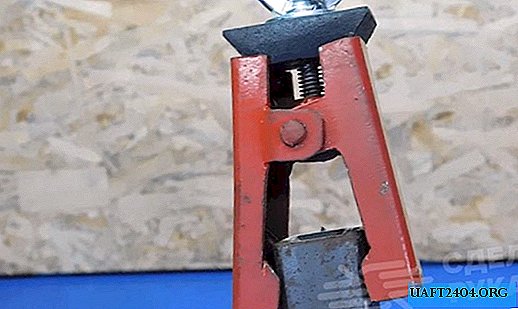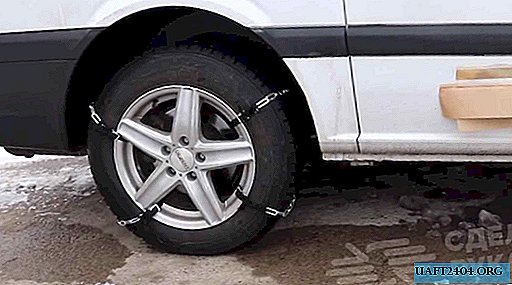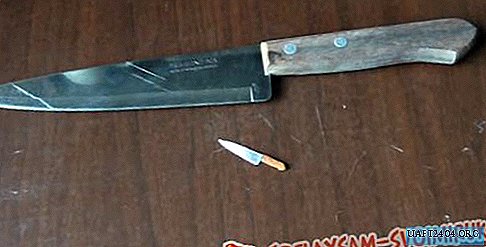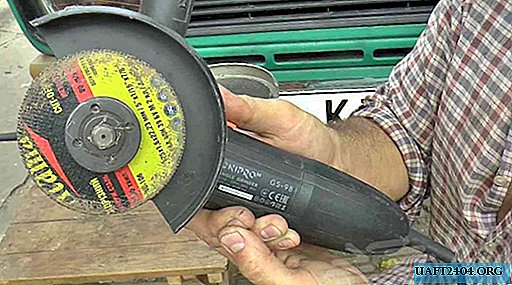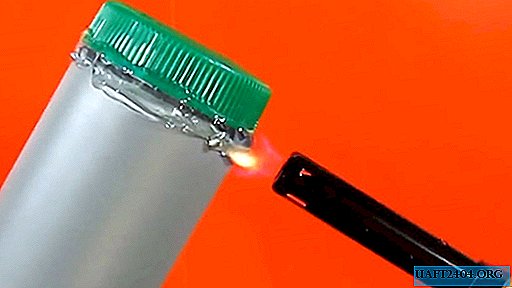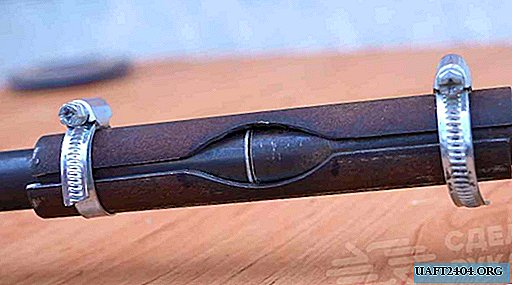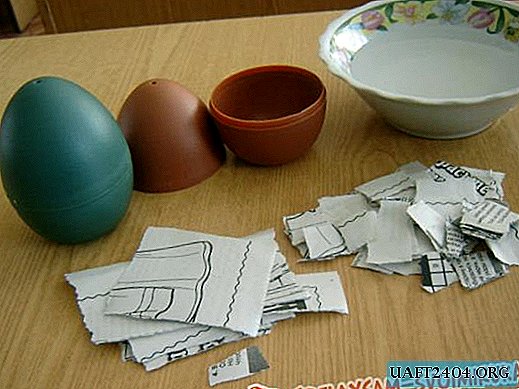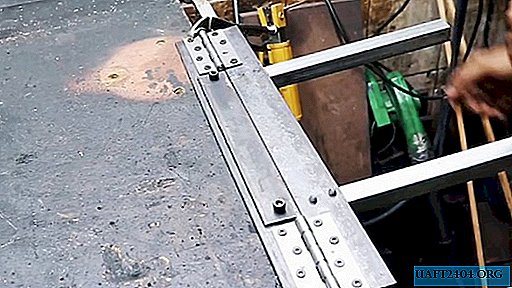
It is often necessary to bend sheet metal, which is done without a bending machine, especially when the bending line is long, is not so simple. But such a device is not difficult to make with your own hands with the help of simple tools and quite affordable and inexpensive materials. It will only require the desire and the availability of basic skills in plumbing.
Sequencing
We cut two pieces 500 mm long from a suitable equal-angle corner in size.

We clamp the corners one by one in a bench vise and, at the level of the ends, attach the door hinges corresponding in size to the edges of the other shelf.

We mark on the shelves of the corners the places of future holes, first with a marker and then with a core, using the door canopy as a template.
We carry out on a drilling machine, taking the drill required for the diameter, four through holes on each side of one of the corner shelves.
We cut the thread in all 16 holes with a suitable size tap, adding a little lubricant to make the process easier, and the threads turn out to be of high quality.

After threading is completed in all holes, remove the chips and wipe the areas with screw holes with rags from traces of lubricating oil.
Tightly fasten with an electric wrench or drill with the appropriate bit by means of screws, door hinges to the corners.

Turn the corners over and put them on the loops. To one of the corners, using the protruding parts of the internal screws as a limiter, we apply alternately perpendicularly and completely against the shelf to a section of a square profile pipe of suitable section and length, and outline it on the lower shelf on both sides.

In two sections of an aluminum profile pipe, we drill from one edge on a drilling machine using a drill that is suitable in diameter for two holes located on the longitudinal axis of the pipe.

We drill exactly the same holes in size and location in the shelf of the corner on which we previously made the markup.
We overturn the corners connected by loops, and clamp the paired shelves into a bench vise. Using a suitable tap, we thread in all four holes, remembering to add grease to the work area.

We again turn the corners with the loops down and fasten with the required bolts the segments of the aluminum profile pipes, which will be instead of handles when using our device for its intended purpose.

To the front side of the home-made product, or rather, to the shelf of the outer corner, we try on a metal strip about 5 mm thick, slightly smaller in width than this shelf size, and slightly shorter in length between the inner ends of the door hinges.
We mark with a marker along the edges of the strip along the longitudinal axial line of the drilling site, clamp it in a bench vise and make two holes on the drilling machine with a suitable drill.
Then we again lay the strip with the already prepared holes on the corner shelf and mark the places of future holes in it with a marker, and to prevent the drill from slipping during rotation, we mark the marked places.

We carry out two holes of the required diameter on the drilling machine at the designated places and cut the threads into them using the tap of the desired size.

We fix the strip on the corner shelf using bolts and a wrench with a nozzle.

We turn the device loops down and cut off all the protruding rods of bolts and screws with a grinder.

We lay the shelf of the outer corner of our device on the edge of the metal table and fix it with two clamps. In this case, the hinges and the strap should be on top, and two pieces of the profile dural pipe should be horizontal and be directed outward, towards the operator.

Checking a homemade listogib "idle" and "in practice"
We test the performance of our home-made "idle". To do this, raise and lower the second (inner) movable corner several times by the handles. At the same time, it should freely rotate from a horizontal to a vertical position relative to the first (outer) fixed corner without jamming due to the door hinges connecting them.
Now we check our bending device "in practice". To do this, take a metal sheet not wider than the receiving slit and divided by three horizontal lines into four equal parts.
We put it into the gap between the strip and the shelf of the outer corner, until the first marking on the sheet is compatible with its inner (output) face.


We grab the handles with both hands and turn them counterclockwise. In this case, the movable corner, turning on the loops relatively motionless, bends the sheet along the intended line by 90 degrees or slightly more, taking into account the elastic properties of the workpiece material.

Repeat this bending process three times.


As a result, we get a profile square tube. To make the edges stricter, the receiving strip of the bending machine can be tightened with bolts and a wrench to the workpiece.

In this case, in order to pull the billet of the profile pipe from our device, the clamping bolts will have to be slightly loosened.
Let's try to flang the sheet. We also insert it into the gap between the strip and the shelf of the receiving corner. Using a square, we check the correct installation of the sheet in the device and activate our device. The flanging learned to be even, there are no traces of deformation and crushing on it.
Warning
In order not to get injured during the work, it is necessary to use personal protective equipment - gloves and glasses.

